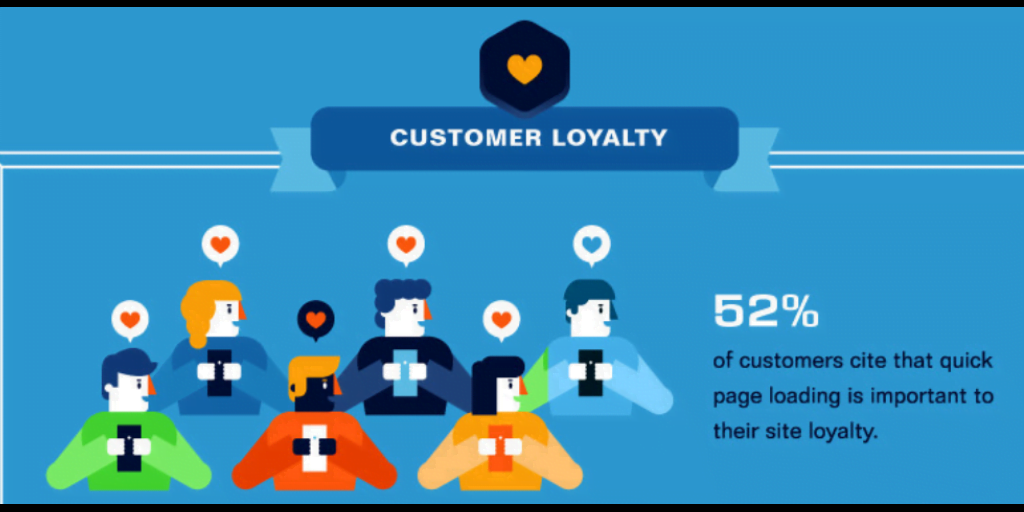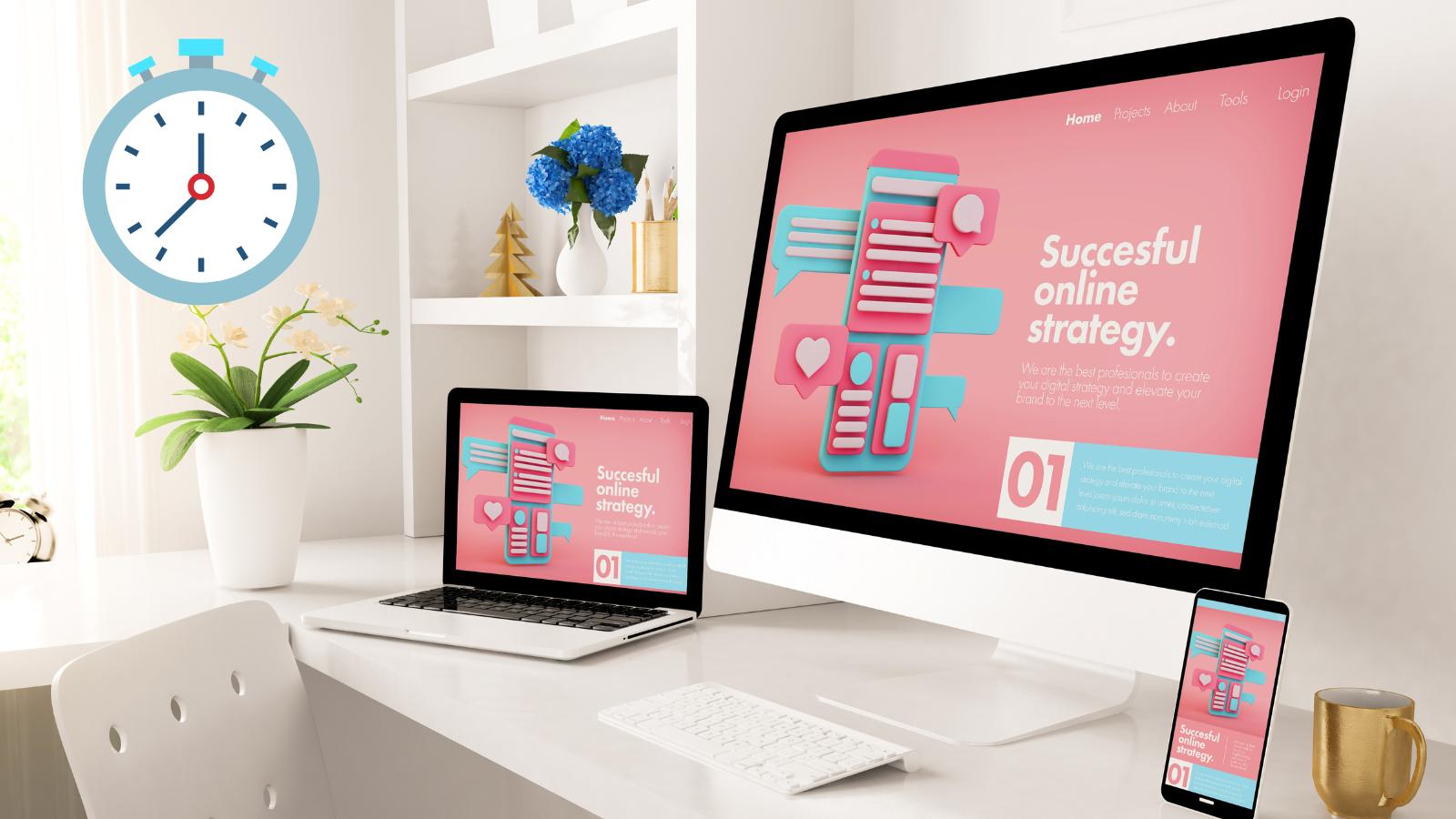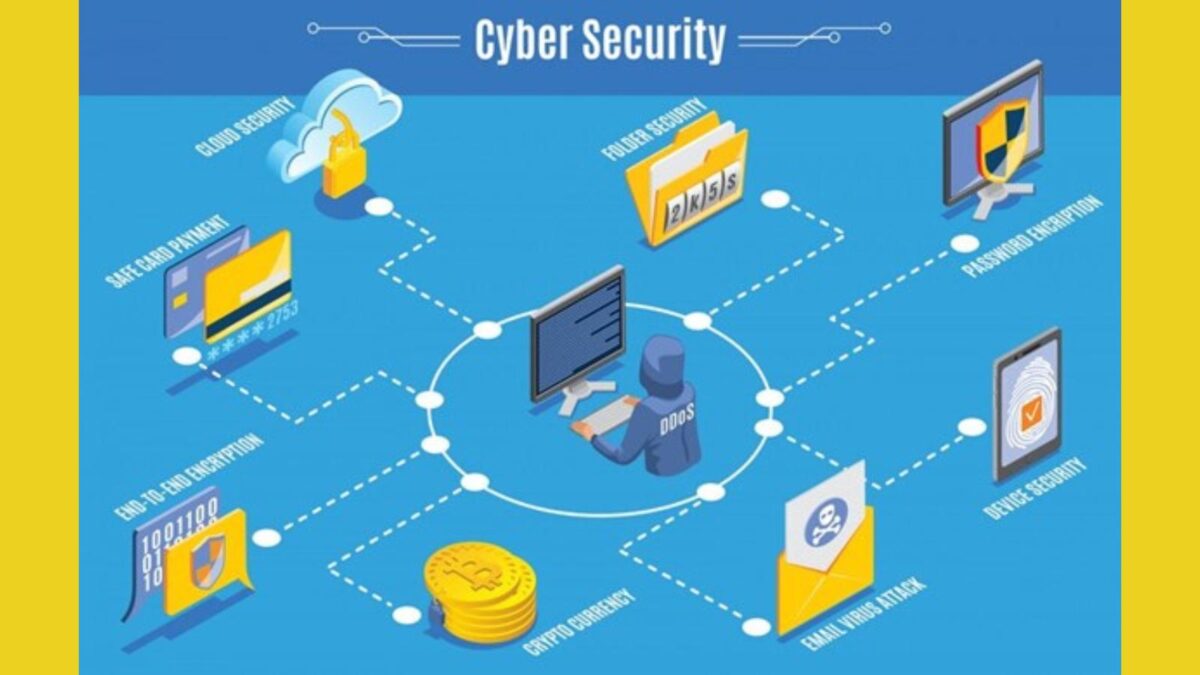We all want our websites to get as many website visitors as possible. It should come as no surprise – whether we use them to share ideas or as a retail platform, it is only natural that we want our websites to be popular. One major SEO factor today is how to use page loading speed to get more traffic to your website.
Heck, we all know how search engine optimization is, and its entire purpose is getting traffic to our websites. The bottom line is, that we all put a lot of time and effort into our websites and we want people to see that.
However, all the hullabaloo of creating quality content for their websites tends to make website owners neglect one important thing – the webpage loading speed.
Table of Contents
How To Use Page Loading Speed To Get More Traffic To Your Website
You can think of page load speed as your website’s first impression. I’m sure we have all met a person who did something wrong the first time we met them.
It was very difficult to like them afterward, wasn’t it?
Therefore, loading speed to get more traffic to your website is so important today for your readers and your SEO efforts. No one has the time in 2025 to wait around for a webpage to load on their phone or on their tablet or even on their desktop.
Website Speed: First Impressions To Get More Traffic To Your Website
Well, what if a website leaves a bad first impression? You can imagine the scenario is very much the same. We will further discuss what kind of first impression your website leaves and see if you can use this to your advantage.
It is no secret that page speed affects where a website lands on Google’s lists of search results. In fact, research shows that pages with lower response times consistently score higher in search rankings.
What’s more, the Hosting Tribunal points out that half of the visitors lose interest in a page that takes more than three seconds to fully load. Google records this as bouncing. Then they take it as a lack of relevant content on the abandoned website.
Furthermore, they give it an even lower score in subsequent searches for the same keyword. The higher your bounce rate the worse your score is.
So, if you want to boost your search engine ranking, you must keep your web pages reasonably swift to load. Needless to say, this is possibly the best way to get a steady flow of traffic to your website.
Effect On Website Visitors
We already noted that visitors tend to have little patience when a web page takes too long to load. The other statistics do not sound any better for website owners.
75% of users are likely to avoid a page that takes over 4 seconds to load. 39% will leave if only the images load too slowly. And finally, 44% will advise their friends against visiting those websites.
It only gets worse if you run an eCommerce website. Namely, each second of delay equals a 16% decrease in customer satisfaction.

What’s more, 18% will give up on buying if the transaction takes too long, and 43% will go to a competitor’s website if they do not get a positive customer experience. The situation seems dire indeed.
However, there is another way to look at this situation.
Remember That Last Statistic On Loading Speed?
Now consider this – the average customer expects the webpage to load in under three seconds, while the average web page takes 9.3 seconds to load. Well, all things considered, if your competition all have slow websites and yours loads quickly, won’t all those visitors flock to you?
We can also mention that low load times are important for site loyalty in more than half of the cases and 46% of people decide if they will buy at the same website twice based on checkout loading speed.
It is clear that keeping your load times low is the way to go in order to secure new and recurring visitors to your website. Keeping load speed down will increase your organic traffic as it’s an SEO ranking factor.
Some Loading Speed Success Stories
One of the ways to learn best is to follow the example of great companies and how they’ve improved by making their websites faster. After all, they have entire teams of web developers that make their websites better, and if they can benefit from better loading times, so can you.
Walmart is just one of the corporations that have seen the positive effects of speeding up their websites. They have recorded a 2% increase in conversions for each second of improvement to their website and a 1% increase in incremental revenue per 0.1 seconds.
AliExpress has taken this to a different level by reducing its loading times by 36%. As a result, they have been receiving 10.5% more orders and have had a 27% increase in new customers who decide to order a product via their service.
Still, this does not apply only to retail. Even a company as well-known as Yahoo! managed to get 9% more traffic by reducing its load times by just 0.4 seconds.
This clearly shows us that any website can benefit from just a little optimization of your page loading speed.
What You Can Do For Website Loading Speed
Luckily, as web technology progresses making websites faster is only becoming easier and easier. Using tools that help you compress your web pages and remove any unnecessary elements, thereby making them faster, is already becoming common practice among website creators.
This is not complicated at all, as many of the tools available have been designed with people who are not professional web programmers in mind.
This clearly shows us that any website can benefit from just a little optimization of your page loading speed. You can read this page load time statistics guide

Your Turn: How To Get More Traffic To Your Website
Have you tried to get your website speed faster recently? You can always check out your website speed with the Google page speed insights tool.
I’d love to know more in the comments below about your loading speed to get more traffic to your website. Has the speed of your website speed affected your traffic?
FAQs: Boost Website Traffic with Faster Loading Speed
A slow-loading site frustrates users, increasing bounce rates. Search engines notice this and may rank your site lower, which reduces traffic. Faster sites improve user experience and search engine rankings.
Aim for under 2 seconds. Pages that load in 1 second or less perform best in terms of user engagement and retention.
Yes, search engines like Google confirm that loading speed directly affects rankings. Faster sites generally enjoy better visibility on search results pages.
A faster site keeps visitors engaged longer. When users don’t have to wait, they’re more likely to complete a desired action, like making a purchase or signing up for a newsletter.
Use tools like Google PageSpeed Insights, GTmetrix, Pingdom, or WebPageTest to analyze your site’s speed and get actionable improvement tips. Test your site out monthly.
Mobile users often face slower internet connections. Optimizing for mobile, like using lightweight designs and accelerated mobile pages (AMP), ensures better performance for mobile visitors.
Yes, compressing images significantly reduces their file size without sacrificing quality. Smaller images load faster, improving speed.
Caching plugins store static versions of your site pages. This reduces server load and speeds up the delivery of content to users.
Yes, your hosting provider plays a crucial role. Shared hosting can slow down your site due to resource limitations. Opt for reliable hosting plans with faster server speeds.
- Instagram Reels On TV: Should Your Content Hit The Big Screen? - December 18, 2025
- Valuing a Blog Business: 9 Mistakes That Lower Your Price - December 17, 2025
- How to Hide Followers on Instagram from Others: Simple in 2026 - December 15, 2025




Hi Poulomi, thank you. Wow, that’s a long time. I’ve worked hard on my site speed this last year to get it below a second. It’s a never-ending job I may add. I hope it has helped your site improve as well. I can’t believe the average is over 9 seconds, I thought around 3-4 seconds. Thanks for your input on this Poulomi and have a great day.
Hi Lisa,
I love this: the average customer expects the webpage to load in three seconds, while the average web page takes 9.3 seconds to load.
I never focus on site speed before, but with all this hype about Core Web Vitals, I finally decided to invest in it.
Hired a guy from Upwork whose specialization is CWV, and he managed to make my site much faster!
Let’s see if Google guru decided to reward me and improve some rankings.
Hi David, oh that’s good they helped you. I have a techie that does mine and I had to use my image plugin to compress my images recently – manually for some reason but it made a difference. Have a great day!
Nope. My hosting guy helped with some of it. I did some work also with images and other site-wide elements.
Hi Mitch, do you use any plugins? There are so many that can help with this along the way. Or have a techie, like Mayura. Email me if you need more information. It sounds like it should not be so hard! But I have struggled some with it over the years and glad I have Mayura to work on it for me today. (and in the past 3 years). Sometimes you to have to outsource a little to save time to make up the money elsewhere. I hope you are off to a good new week and month Mitch. Thanks for coming by again on this one.
One of my problems is that even when I test older articles that had no images or videos, not only does they mobile speed rank horribly but the major reason they give is this thing about Facebook integration… something I didn’t even know about until I started researching it. And you can’t get rid of it without knowing how to find specific php files… which I haven’t been able to get anywhere on. Sheesh! lol
Hi Ryan, thanks. I do use a CDN, I’m not sure if a VPS though. I will have to check with my techie Mayura. Thanks for the tip Ryan. Always something to keep up on, right?
Hi Mitchell, I have found in the past with Mayura’s help that my images were too big, my plugin to reduce them didn’t work with CDN and then a few videos files were too large. I hear you though, it is always something! I could not have survived this long without Mayura’s assistance on the tech stuff. There comes a time when you have to pay for some services. I’ll have to take a look at your blog. I love the new clean look there! I haven’t checked it on mobile recently so I will. Thanks for coming by Mitch and have a great day.
That Infographic is legendary Lisa! Phil Dews finally talked sense into me 2 years ago. My blog had been pretty fast but he got me using a CDN. Faster. Then last year, a VPS. Even faster. Not pure lightning but it is close, which has helped increase my traffic.
The problem isn’t always page speed as much as it is mobile speed and what to do about it.
For instance, I went on a major quest back in 2016 to work on mobile speed; wrote 3 articles on it as I got to where I wanted to be. I also use WP Touch on all my blogs, which makes them mobile friendly. However, it doesn’t necessarily address mobile speed, which is problematic.
As much as I understand coding, I can’t figure out how to address some of the things Google’s PageSpeed Test says could help you speed it up more. I’ve done all the things I could handle, and in 2016 it was enough… but now it’s not.
Truthfully, Google’s getting on my last nerve! lol And yet… whenever I test my blog pages and post… things are loading pretty quickly for me. Makes me wonder if it’s worth bothering with Google and their tests… half of which one can’t do anything about anyway (I’ve made 90% of the changes; I’m stuck and done).
Hi David, as long as you are getting improvements that’s a good thing. Did you have to change hosting companies or themes to do it?
When I did my big site audit earlier this year, loading speed and mobile experience topped my list. I’m not thrilled yet, but it’s much better than it was before.
Thank you Donna. Yes, imagine Walmart having been slow speed? It sure does make a difference these days. Yes, many more access our stuff via their mobile devices donna. Thanks for coming by and have a great rest of the weekend. Do you still have snow up there?
Hi Lisa,
Gotta say I just love that infographic! Speed is necessary because time waits for no one lol. I like the example you have given about Walmart. Interesting how their sales boosted when they had their website up to speed.
I had to speed my blog up, especially for phone usage. I did notice more readership since I have done that.
Not many have the patience to wait for loading time and this is why it is so important to check our speed.
Thanks so much for bringing up this important topic,
-Donna
Hi Vishwajeet, thank you. I really liked it too. That stat is amazing, isn’t it? They say our brain is almost like a goldfish when it comes to that. We want everything now and can’t wait! Our attention span has become less in time now. Thanks for coming by and have a great weekend Vishwajeet.
Hello Lisa,
Awesome Infographic. Page speed plays a great role in SEO and helps you to rank better in search engine result page. Google also loves the site that loads faster. Page speed also helps you to improve the user engagement on your blog. According to a study, people will leave your blog if it takes more than 3 seconds to load. Thanks for sharing these helpful tips on improving page load speed.
Regards,
Vishwajeet
Hi Moss, thank you. Yes, that is for sure – nobody wants to sit and wait anymore for anything! And bounce rate is another factor as well in helping your websites SEO. I will check out your latest post Moss. Thanks for the heads, and for coming by and commenting. Have a great day and weekend ahead Moss.
Hi Lisa,
I love the infographic, and the points in here are useful. Website speed is of vital importance which is why it is one of Google ranking factors. Nobody want sit and wait for a site or web page to load. In fact, I just published an article yesterday about “how to boost website user experience.” Amongst the tips in the article is “website speed.” Why? Because if your site is not up to speed, it will increase your bounce rate. So it’s paramount to upgrade site speed to encourage users and prospects.
Bythway, I’m linking to this article right now, so please check out my new blog post and link to it as well.
Cheers!
Hi Enstine, thank you. I know you do. What else is under the Technical SEO? That is awesome about your hosting making a difference. I’ve been testing mine and always updating to adjust. I agree, speed is key today especially with so much being done on mobile and on the go. Thanks for coming by Enstine and have a great day and rest of the week there.
Wow Wow!
Not only is this beautiful Lisa. It has some really useful stats.
As an SEO blogger, I know the importance of speed when it comes to search engine traffic. This is part of what I call Technical SEO
Few weeks back, my host added free cloud hosting to its packages. I moved my blog from cloudflare to it and there was a massive improvement, from about 1.3 seconds to less than 600ms.
I believe speed shouldn’t be any reason my site fails in SEO.
Hope you are having a great week
Hi Brad, thank you. Oh yes, you do get what you pay for. I believe my cache plugin was $99 year – I also use a CDN on the site. I have my techie implement it for me. I agree, the lighter the better. I’m thinking of disabling my tweets on the bottom of mine as they do slow it down slightly. So much to do with WordPress as it changes so often. Thanks for coming by Brad and have a great day and a wonderul Thanksgiving Day ahead.
Wow Lisa nice article and infographic! Your timing is great, as I have had to go from being an ‘extreme cheapskate’ to finally investing $50 for the WP Fastest Cache plugin. I have used many different ones in the past, and this by far is the easiest and probably the most effective one yet!
The only issue here, is my theme CSS and .JS files. Although minimized, my mobile score is still low. My Desktop is near perfect though. My advice to all, is to use a light weight theme for blogging and look into the plugin above.
Speed is so crucial for the success of your site, as you have so elegantly expressed in your article!
Hi Sakshi, thank you. Yes, speed page can make a big difference. I use social warfare and the Pinterest button is on the button, I used to have the mouse over but it slowed down my site’s speed. Ironic, right? I may change mine since social warfare no longer counts Twitter shares. I need to research and see what else is out there now for it. Thanks for coming by and Welcome to Inspire To Thrive Sakshi. Have a great day!
Hi Janice, thank you. I haven’t noticed your site loading slow. Will have to check a speedpage test to be sure. Thanks for coming by and have a wonderful Thanksgiving!
Hey Lisa,
Infographic…is damn amazing. You have well said, page speed matters a lot. This is the very first step to win the confidence of the people. If I talk about my experience, then I would not want to visit such sites that take a lot of time to load.
It was an absolutely great read. Just one suggestion, These beautiful images require a Pinterest mouseover button so that people can easily share.
Thank you, Have a good day.
Gorgeous infographic! Loading speed definitely matters. I need a new theme since mine loads too slowly.
Janice